How to Choose the Right Hiking Shoes
No Two Feet Are The Same
How to choose hiking shoes can be confusing. No two feet are the same. Your spouse, sister, or best friend may have a shoe that they swear by, and that’s wonderful, but your ideal hiking shoe may be completely different. We’ve worked to round up the best hiking shoes for a variety of feet, but it’s important to cover the basics first. Depending on the shape of your feet or the type of support you’re looking for, a different model will suit you best. In this article, we’ll give you the lowdown on how these different factors will affect which shoe you should choose.
You make Adventure Alan & Co possible. When purchasing through links on our site, we may earn an affiliate commission at no additional cost to you. Here’s why you can trust us.
Three types of shoes
We feature three main types of shoes in our hiking shoe guide. These are traditional trail runners, super-cushioned shoes, and true hiking shoes. You’ll notice that none of these include mid-rise hiking boots, and we’ll explain that more later on. Here are the main differences between these three categories of shoes to help you choose hiking shoes that work for you.
1. Traditional Trail Runner
A couple of decades ago, wearing traditional trail running shoes while backpacking or thru-hiking was a fringe trend. Nowadays, ultralight trail running brands like Hoka, Altra, and On Running is dominating the trails. This is because these shoes offer excellent traction, stability, and agility without any extra weight. Furthermore, these shoes are more versatile if you like to hit the trails for a variety of activities. Traditional trail runners are great for anyone, and we feature a variety of different models offering different highlights, whether you are drawn to a zero drop model or all-terrain traction. We recommend this category for anyone who has long backpacking or hiking trips planned for the coming year. Trust us, your full body will thank you for taking the weight off your feet.
2. Super Cushioned Shoes
Next, we feature a few models that have extra cushioning on the bottom. We don’t separate this into a separate category in our guide. However, you can determine how cushioned a shoe is by looking at the stack height we list. Shoes with a higher stack height are higher off the ground and feature more cushion underneath your feet. This is great for hikers and backpackers who prioritize all-day comfort, but these shoes may take a bit of getting used to. Depending on their traction, they can work well off-trail but not always. A model like the Hoka Speedgoats, a shoe we love, is highly cushioned with a 32mm heel stack but still travels well off-trail because of its excellent traction. Cushioned shoes are comfortable for extremely long hiking and backpacking days, and are an excellent choice if you are planning to push miles. However, we highly recommend trying them out before heading into tricky terrain, to ensure your feet still feel agile.
3. Hiking Shoes
Finally, the last major category we feature is true hiking shoes. These are typically much heavier and prioritize stability and traction over agility and speed. Though these shoes will stick to a variety of terrain, they will not be as nimble and graceful on tricky trails as other, lighter models. These models are typically extremely durable and last a very long time, but have a longer break-in period than traditional trail running shoes. We recommend true hiking shoes only for hikers and backpackers who know they are sacrificing speed, agility, and efficiency for the feeling of more stability. See recommendations for mid-rise hiking boots from our friends at DIVEIN who cover traditional hiking footwear in greater detail.
We’re Fans of Lighter Trail Runners. Here’s Why.
Hiking boots and stiffer shoes have long been touted for their support, protection against rocky trails, and ankle protection (more on that below). But you’ll notice the majority of our recommendations for the Best Hiking Shoes for 2021 are lighter-weight trail runners. A lighter shoe offers more flexibility, feel on the trail, and offers the ability for your toes to grip, which can help balance. Wearing a lighter, more flexible shoe can be speedier for longer hikes, and won’t wear you out as quickly as hiking with a pound (or more!) on each foot. Additionally, many light, flexible shoes still have rock plates, lugs, and toe caps. For reference, we usually won’t recommend a hiking shoe any stiffer and bulkier than the Moab Ventilator Low.
The Myth of Ankle Support
Ankle support only comes in handy in extreme situations. Ice climbing boots and technical off-trail expeditions both use high-rise, extremely rigid boots. This style is not productive for typical trail hiking and can hinder your ability to move through normal terrain. You’ll want a boot in the winter for protection, but that’s about it.
“But I have weak ankles, so I NEED high-rise boots!” No, you don’t. There have been recent studies that found high-rise boots can actually cause you to roll your ankles more. This is because if you go over, you don’t have the agility of a more flexible shoe to save the roll, and it can end up as a more serious injury. They don’t actually give you ankle support. What’s going to give you ankle support is stronger ankles. In a study by the Cleveland Clinic, Dr. Miniaci-Coxhead notes that the best way to prevent an ankle sprain is to strengthen muscles that evert the ankle. Furthermore, she says that research shows muscles that evert the ankle (which prevent sprains) may activate more slowly in high-top shoes. This is because you do not have the agility and flexibility afforded by lighter trail running shoes. So, if you’re worried about ankle support, we recommend finding shoes that feel nimble and stable and strengthen your ankles.
Understanding the components of a trail running shoe
- Outsole: refers to the bottom of the shoe, where traction (or lack thereof) comes from
- Lugs: on the outsole, lugs are what gives shoe traction and can be in a variety of patterns and of different millimeters
- Midsole: between the outer and inner soles of the shoe – absorbs shock, provides support, and in some cases propels high energy return
- Insole: adds comfort and arch support, can buy custom insoles or certain shoes (Oboz) come with them
- Upper: fabric on the upper outside of the shoe, protects feet from rocks/debris and can increase/decrease breathability of the shoe
- Tongue: gusseted or non-gusseted, a gusseted tongue protects from rocks/debris
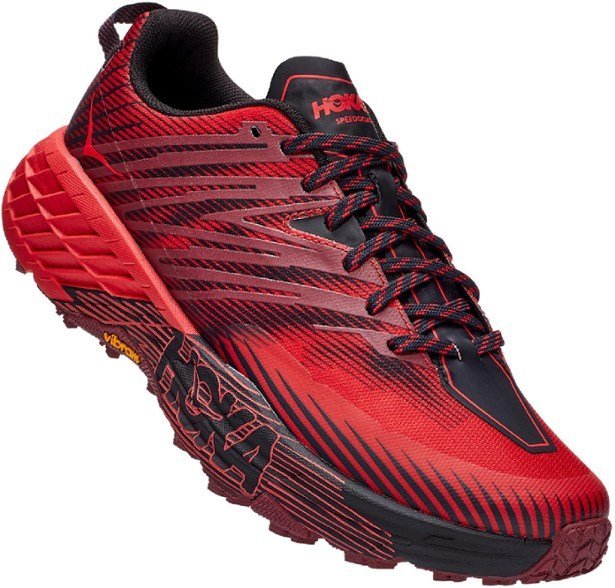
Thick soles, high stack height on the Hoka One One SpeedGoat shoes.
Diving into a Few Current Shoe Trends and Debates
Thick, Cushioned Soles vs Thin Soles
As already discussed, stack height and cushioning play a major part in the feel of a shoe. For example, Hoka is known for its ultra-plush and comfortable shoes, while more minimalist models take the opposite approach. Consider the following when you choose hiking shoes:
- Cushioned Soles
Pros: cushion feels extremely comfortable to some, is very kind on the feet for high-mile days
Cons: may feel “tippy” and cause ankle twisting without precise foot placement over tricky terrain
- Thin Soles
Pros: extremely agile in a variety of terrain, connects your foot to the ground
Cons: lacks all-day comfort, may cause pressure on your feet
Wide Forefoot vs Narrow Forefoot
The hiking shoes we feature have a variety of different widths. Also, the one that you prefer might not necessarily be the one that directly corresponds to your foot size. To illustrate, some hikers with narrow feet still prefer a wider fit to give their feet room to spread. Conversely, narrow shoes are preferred by hikers and runners who like to feel snug and secure. Any shoe by Altra, particularly the Lone Peaks, features wide toe boxes and have plenty of room. An example of narrow shoes is the La Sportiva Bushidos, which are designed to hug the feet.
- Wide forefoot
Pros: gives your foot room to spread out, accommodates swelling, fits a variety of feet
Cons: some may feel unstable due to extra room in the shoe, which can create “sliding around”
- Narrow forefoot
Pros: the snug fit feels extremely secure while on extreme terrain
Cons: can create friction on the outside of feet if the fit is too snug, affects all-day comfort
Zero Drop vs Regular Drop
Heel-to-toe drop, or drop, refers to the millimeters of difference between the height of your heels and the height of your toes in a given shoe. Zero drop shoes have taken the backpacking community by storm in recent years, but they may not suit everyone. Here are the respective pros and cons.
- Zero or low-drop shoes (0-5mm drop)
Pros: mimics bare feet, encourages improved foot stride, and uses more calf and Achilles engagement
Cons: can be extremely uncomfortable at first and even lead to Achilles strain if you do not use proper stride
- Regular or high-drop shoes (6-15mm drop)
Pros: most likely what you’re used to, best for those who strike the ground with the heel first, typically have a higher stack height (more cushion)
Cons: do not fully engage the Achilles and calf muscles, do not mimic our natural stride
Hiking Shoe Energy Return
New technologies are emerging in the footwear world, and they’re propelling ultra-endurance athletes and recreational backpackers forward alike. This new phenomenon is measured as “hiking shoe energy return,” and focuses on how the technology of the shoe uses your own momentum to propel your stride forward into the next. The Nike AlphaFly model pioneered this new technology, with Eliud Kipchoge using a prototype of this shoe to become the first runner to break a two-hour marathon. Now, different brands are testing this same concept in their own models.
The two shoes we’ve included that use a similar concept are the On CloudUltra trail shoes, and The North Face Flight Vectiv shoes. The CloudUltra shoes use their proprietary Helion SuperFoam that propel your strides from one to the next, “as if on a springboard.” Similarly, the Flight Vectiv shoes use VECTIV technology to maximize energy return and minimize fatigue. While it may initially seem like these shoes are designed for the pros, high energy efficiency benefits everyone. Lightweight and efficient shoes have the ability to turn a 12-hour day on the trail into an 11-hour day. We’re extremely excited to continue following the high-energy technology and see where it takes these sports.
Other Factors to Consider when Choosing Shoes
Durability, explained.
You can assume a trail shoe has a 500-mile lifetime. If the mesh upper and the outsole stay intact, what you’ll experience is a support collapse from the midsole. Durability is subjective, but also where the shoe is going to fail. The wider the shoe, the less durability you have. Usually, soles that have better-wet grip and traction aren’t going to be as durable because the rubber they use disintegrates faster. The parts that fail first in a shoe depending on the model, your individual stride, and the terrain. Sometimes the mesh upper blows out the sides, sometimes the toe cap comes off and exposes the front of the shoe to the trail. If all of those components stay fresh for the lifetime of the shoe, the final thing to go is the support collapsing.
Tips to Extend Shoe Durability
Have you ever loved a pair of shoes, but blown through the outer fabric way too quickly? These “high wear areas” tend to be the fabric, bumpers, or soles of shoes and are the most common reason for having to replace a pair earlier than anticipated.
Tip | Self-reinforce high wear/blowout areas: Most often this occurs on the fabric at the “hinge” of your forefoot or the outside of your shoe at the base of your big or small toe. If you know this happens to your shoes, you can coat that area with Shoe Goo prior to using them. We’ve had great success with this method to significantly extend the life of our shoes.
Another way to increase shoe life is to make sure you’re not carrying unnecessary weight in your pack, and you are placing your feet carefully. Outer fabric tends to tear when your feet are pushing up against the edge of the shoes because of poor placement in rock fields or tricky terrain. Also, a heavy pack will increase the wear of the shoe’s soles. Lighter pack = longer-lasting shoes.
*See our guide ULTRALIGHT BACKPACKING GEAR LIST for ways to cut down on the weight in your pack.
Just say no to GoreTex/waterproof shoes
We are not keen on waterproof shoes for most situations. And for the most part see waterproof shoes as a significant liability. Bottom line, most of the time your feet are hotter, wetter, less comfortable and shoes take far longer to dry out. And once filled with water (heavy rain or wading) there is nowhere for it to go. You are essentially wearing a foot shaped bucket full of water.
The temptation of a waterproof shoe is understandable, but it comes with some downsides. A waterproof shoe doesn’t breathe as well making your feet hotter damper and more blister prone. The membrane can crack, and no matter what, the shoe is still going to get wet on the inside. Once it does, it doesn’t dry out nearly as fast as a normal mesh shoe.
Gore-Tex (with a higher rise, e.g. mid or high top shoe) can be good in snow and conditions that are wet/snowy, and temps are not above 40-50 degrees. It will provide an extra layer of protection and prevent the boot from wetting out, but in the wettest conditions, it will either soak through or come in the top, and then it won’t be able to dry out as fast. Wading through a creek or river and leaving your shoes on might seem like a completely ridiculous idea, but a well-draining and quick-drying shoe works wonders to help you stay speedy and continue moving. A GTX shoe is designed to protect you from snow on the trail or light moisture outside, not act as a waterproof shield that will protect you from swimming through a stream.
Keeping your feet warm.
Constant moderate movement is the best way to keep your feet warm in most conditions. Avoid relying on insulation or warmer/thicker socks. Both of these have serious disadvantages for most temperatures and conditions. Quality socks are as important as quality shoes. A couple of our favorites are the Darn Tough Micro Crew Cushion Sock, and the Smartwool pHd Light Outdoor Crew Socks. However, in the winter, a lightly insulated Gore-tex shoe may make sense. We will mention a couple of shoes with GTX for winter use in minimal snow, but for the most part, we recommend opting for the non-waterproof versions of shoes.
Blister prevention
The best way to prevent blisters is to hike approximately the same mileage (and in similar terrain) in the same shoes and same socks that you’ll wear on your trip. If you do this you are almost 100% guaranteed not to blister your big hiking or backpacking trip. That is, you can’t blame the shoes for poor fit, or being too stiff, etc. You should have conditioned your feet and/or found that out long before your trip.
Mesh allows for dirt entry, which can contribute to blisters as well, but you want to have a tight-fitting sock and a form-fitting shoe which prevents rubbing. Shoes that are too big or too small contribute to blisters. Thin, quality socks are all that you need. Friction is created by heat rubbing between your feet and the shoes, and so thick socks may actually create more blisters. We recommend thinner socks and bringing some Leukotape Sports Tape to tape over hot spots before they create blisters.
LNT and the lugs on your shoes
You probably haven’t thought about this, but you actually need these deeply lugged soles? The answer is, on buff trails, probably not. On good trail (and that’s most trails in the US) you don’t need a ton of deep traction, and the deeper lugs tear up the trail and leave literal holes in the mud and softer portions of the trail. Sometimes, “tearing up the trail” is not a good thing, when it literally means aggressively lugged shoes shredding the trail into pieces. In constant, most shallow lugged/tread running shoes will also work quilt well day-hiking on good to decent trails. Consider using your deeply-lugged shoes for when you really need them, like snow or lose, wet and treacherous terrain.
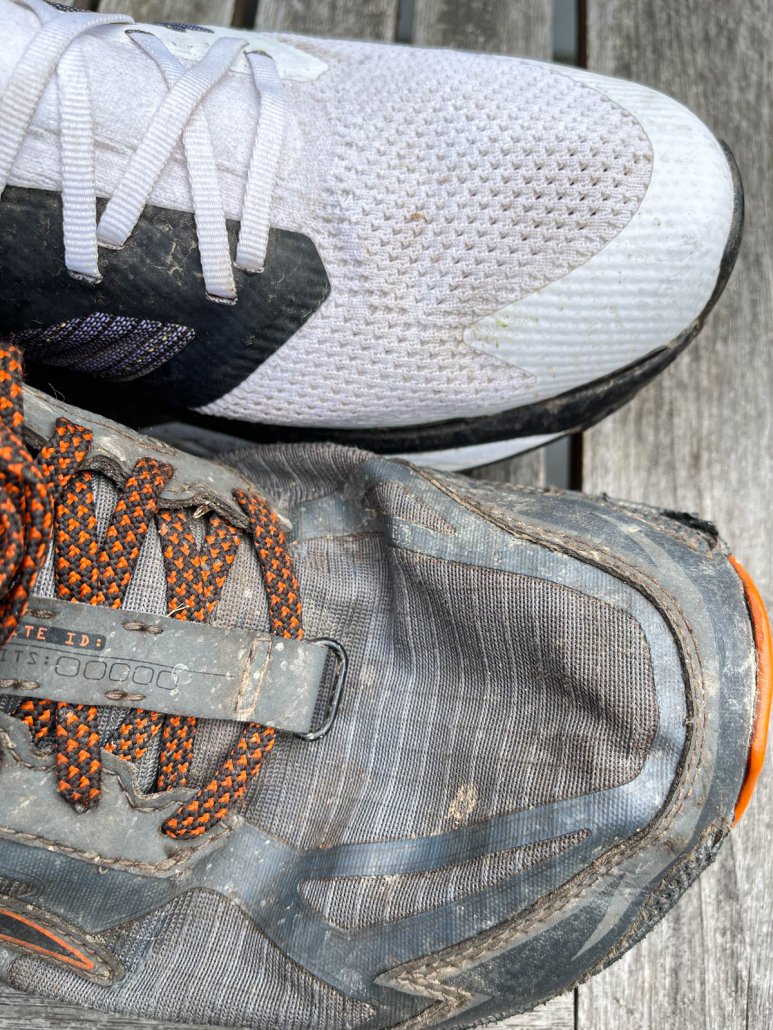
Top: the very open weave on The North Face Flight Vectiv shoe that allows moisture & heat to escape. Bottom: the tight weave on the Altra Lone Peak that keeps debris, sand or trail grit, out of your shoe.
Shoe Fabric Options | Ventilation vs Dirt/Sand Entry
The vast majority of trail runners and hiking shoes have a highly ventilated, open weave upper fabric. And for most situations this is a good thing. It allows moisture to escape from your shoe and vents out excess heat. Both of these increase shoe comfort and reduce blisters.
But there are instances where this open weave fabric can be a curse. 1a) If you are hiking very dusty trails, e.g. the PCT where there is heavy foot and/or horse, traffic the fine trail grit can easily penetrate the shoe upper creating a muddy gritty mess inside your shoes that lead to blisters and other issues. 2b) In the desert Southwest the very fine sand easily penetrates mesh fabric. In just a few minutes of walking in this fine sand and you shoes can fill entirely with sand. You have to stop, take them off and pour sand out of them — uncomfortable, time consuming and definitely blister and abrasion issues with that much sand in your shoes. 2) In cold weather a tighter weave is better. It keeps significantly more warmth in the shoe, and if hiking in snow, it slows down snow penetration and moisture entering the shoe.
Finally, stick to what you know
This is probably one of the best pieces of advice we can give. When you take off on a long-distance hike or anything extended in the backcountry, don’t get a new pair of shoes in a new style specifically for that hike. No matter what you read, and the kind of advice you’re offered, it won’t end well. If you want to try a new model, the best time to do it is when you’re taking shorter day hikes and don’t have to completely commit to something right off the bat.

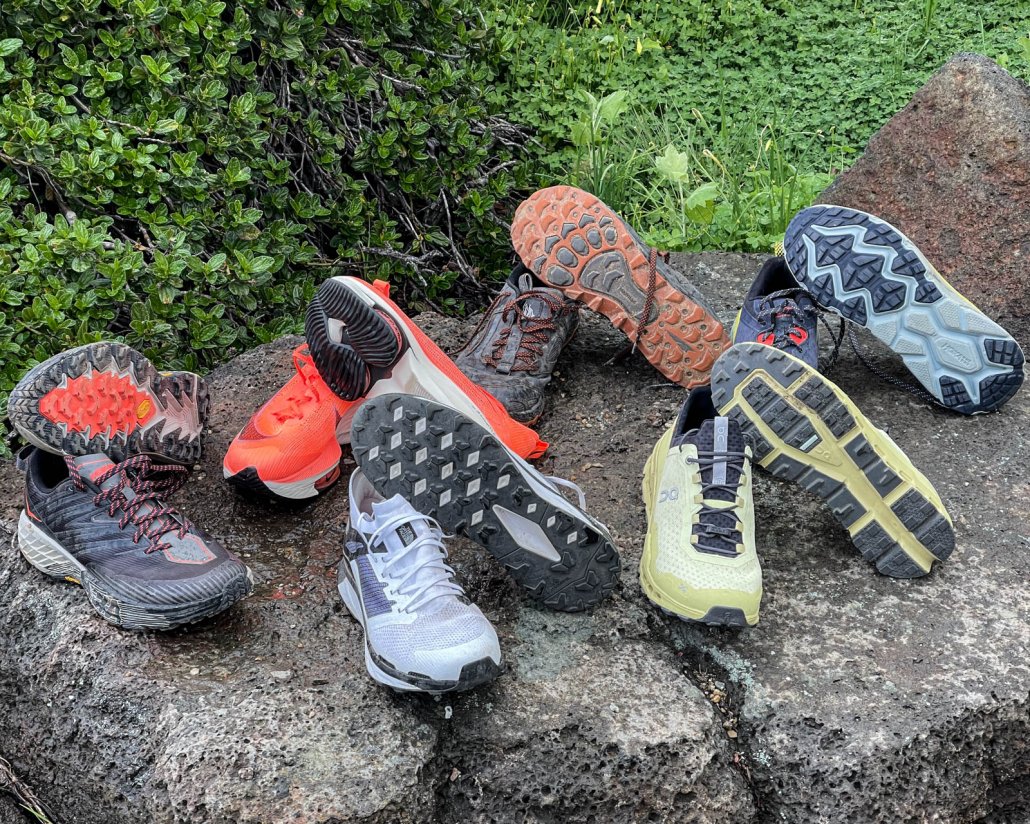
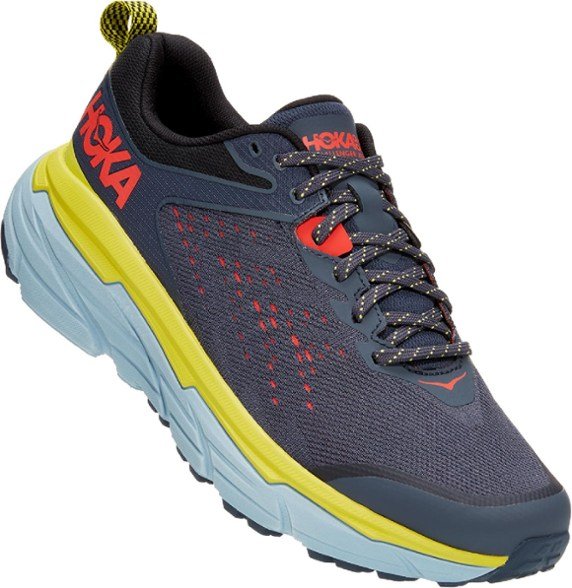

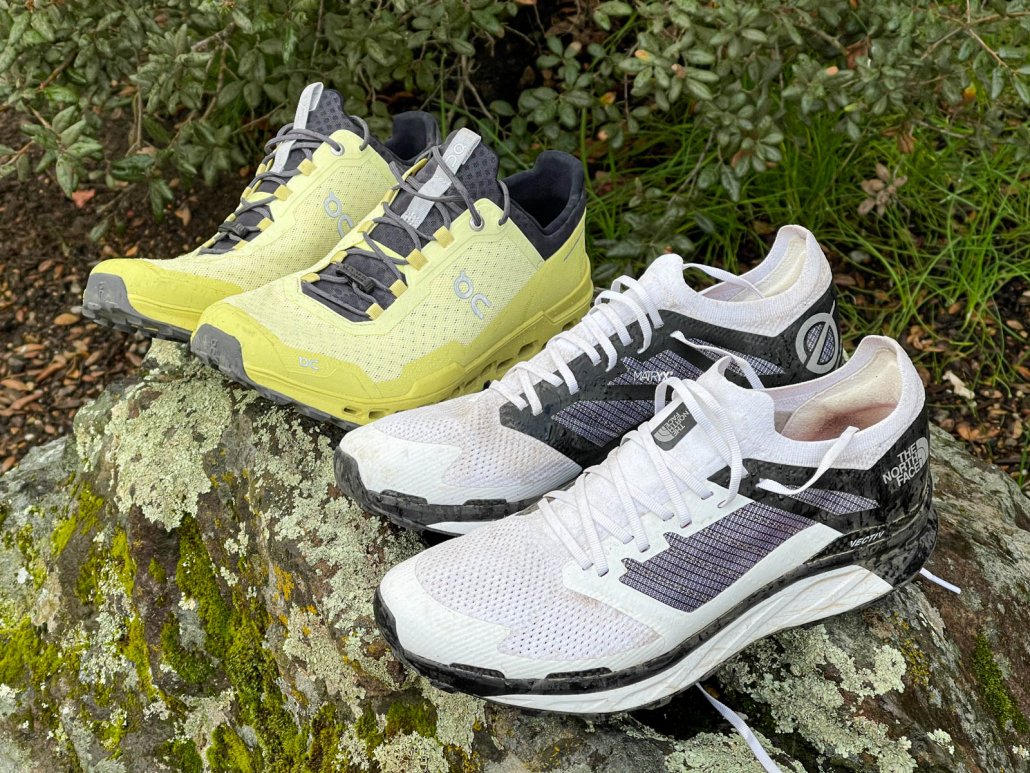
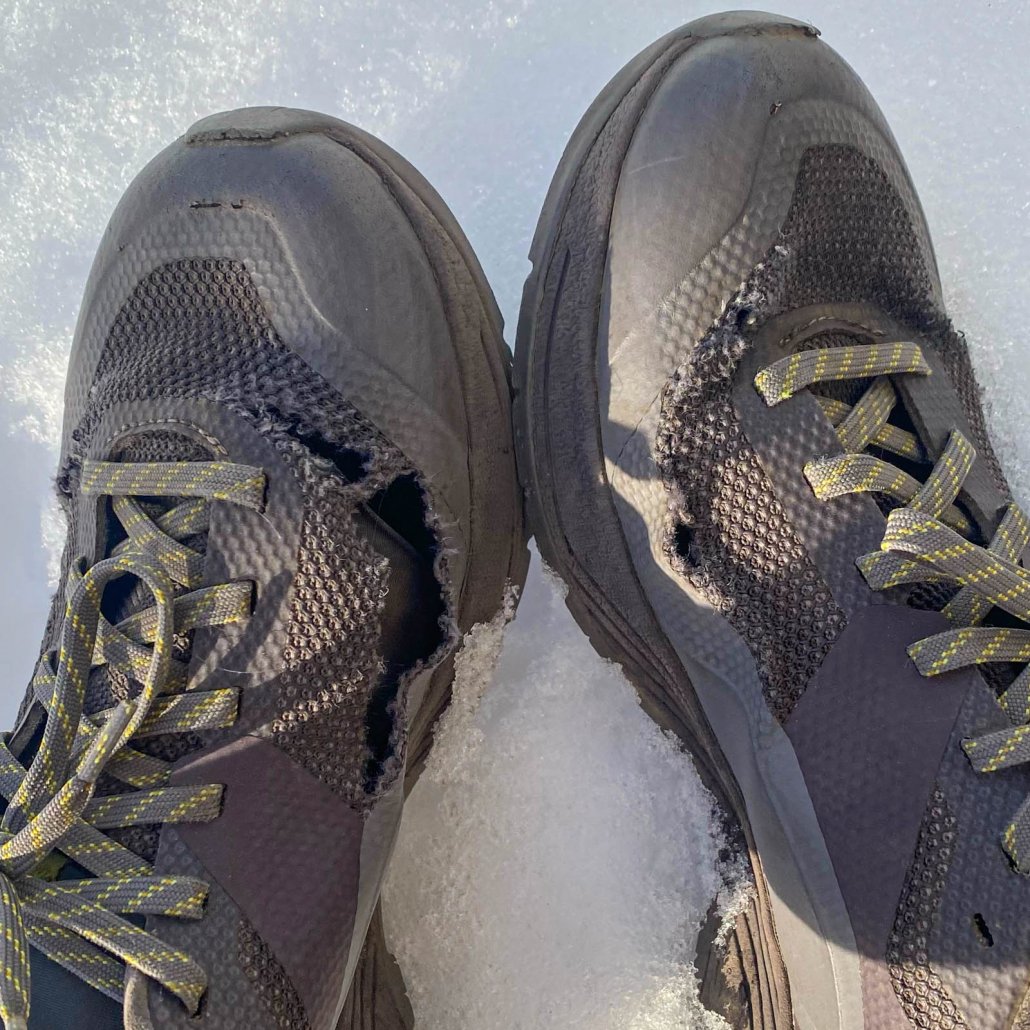

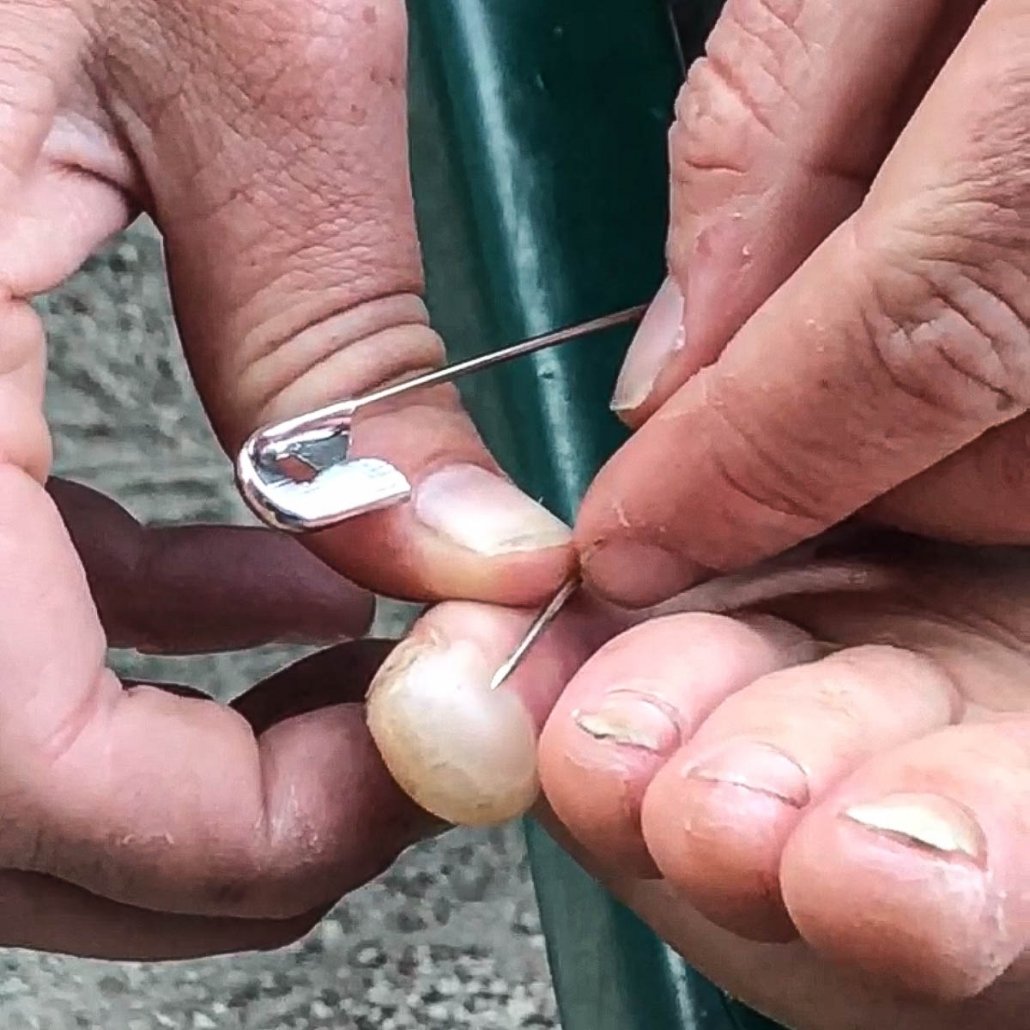


Leave a Reply
Want to join the discussion?Feel free to contribute!